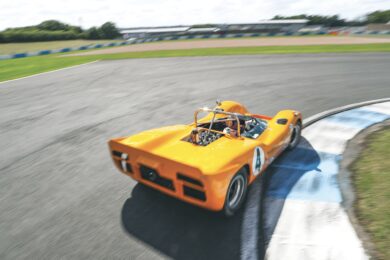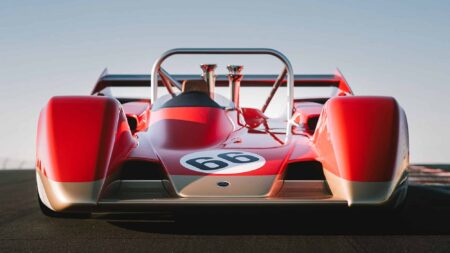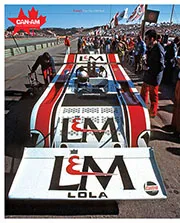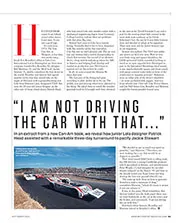The accident happened at the end of September 1965. They discharged him, still on crutches, in January 1966. Later that same month the Ferrari mechanics engine-winched him (literally) into what should have been his Tasman series racer. Enzo had been extremely supportive: it was his insurance that had paid all the medical bills, even though Surtees was not in a Ferrari at the time of the crash. He was capable of magnanimity as well ruthlessness; in 1965, he had allowed the creation of Team Surtees so that his number one driver could go ‘Big Banger’ racing with Lola.
“The T70 was a good all-round car,” says Surtees. “It could be a little fragile, but usually you could drive it forcefully. It had a good aero balance, and it was not hard to adapt it to different circuits. There wasn’t a big change between the Mk1 and the Mk2 we used in 1966. It was lighter (a mainly aluminium monocoque saving 701bs over the mainly steel Mk 1), but it was just details really.”
So armed, Surtees decamped to a small garage at, ironically, Mosport, in readiness for the just-created Can-Am series. There was also the small matter of F1’s two GPs in the Americas — at Watkins Glen and Mexico City — to consider. The next two months would prove very successful — and extremely lucrative.
“We had a skeleton team: Malcolm Malone, one of Eric’s lads, joined me and he acted as the truck driver and mechanic, and a local guy called Ron Mutton gave us a hand. We had two Traco Chevy race engines, a Chevy truck and a trailer. We had nowhere near the resources of Chaparral.”

The Brit leads the way in Vegas
Getty Images
Jim Hall’s ivory-white cars were absent for the series-opener at St Jovite, but Surtees was faced with the McLaren M1Bs of Bruce McLaren and Chris Amon. He started from pole, but McLaren, who had won the GP 7 USRRC race here earlier in the year, was in determined mood, and they passed and repassed. Amon, meanwhile, was on a charge after losing a lap-and-a-half during a pitstop to clear out of his throttle slides and wrench off damaged bodywork, legacy of a first-lap excursion. Bruce waved him through in the hope he might fluster Surtees. The lapped Kiwi swooped and harried for a dozen laps. To no avail. The daunting Quebecois track, where two cars (Lolas!) had looped-the-loop over its crest in practice, again fell under Surtees’ spell.
The same could not be said of Bridgehampton and Mosport, scenes of rounds two and three. At the former track, he pitted early with a sticky gearshift and retired on lap 17 with a broken oil pipe. At Mosport, he set the second-fastest practice lap, but started from 11th because of an unfathomable qualifying system that gave preference to times from the first session (Friday) — even though it was wet Surtees wasn’t the only quick man buried in the pack. It was a recipe for disaster. A first-corner pile-up ensued and he was whisked to hospital — with only minor injuries this time.











